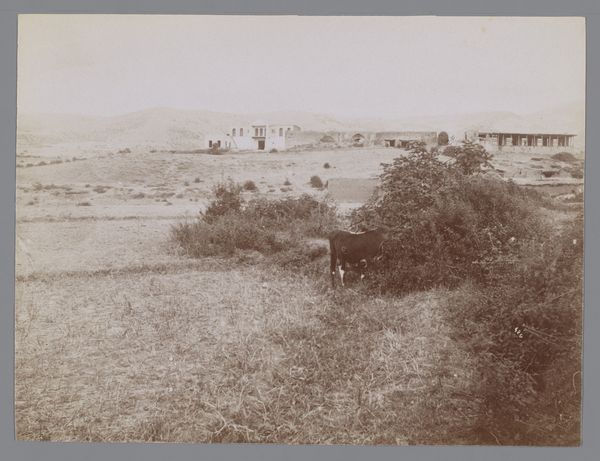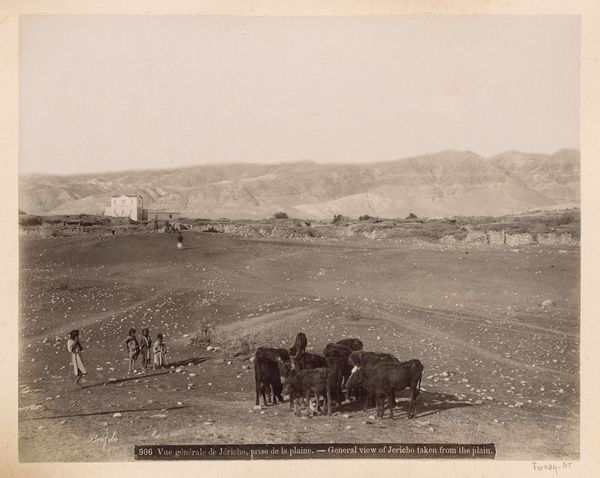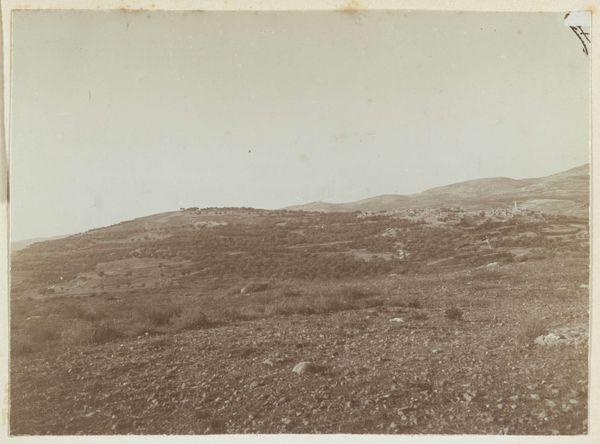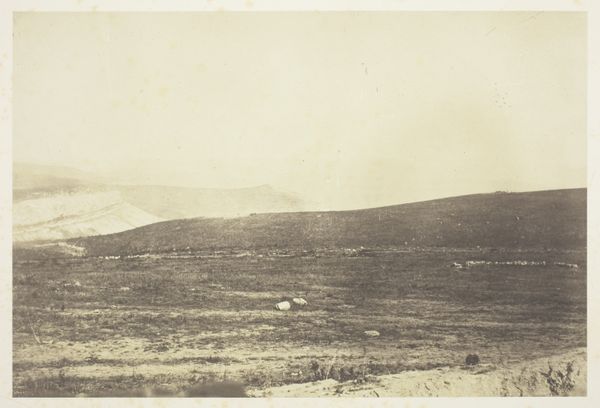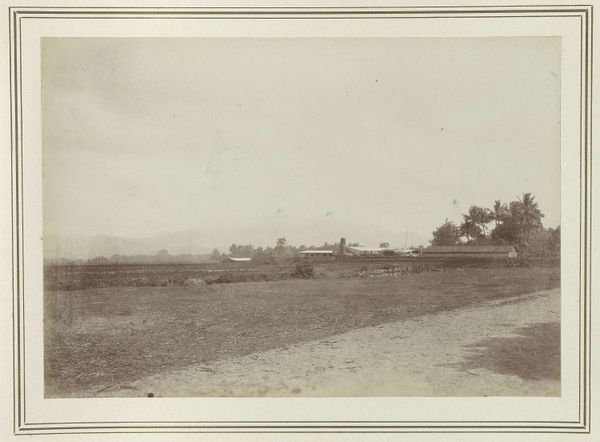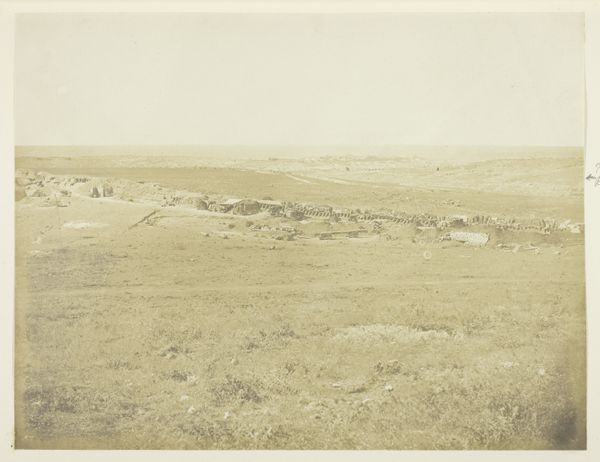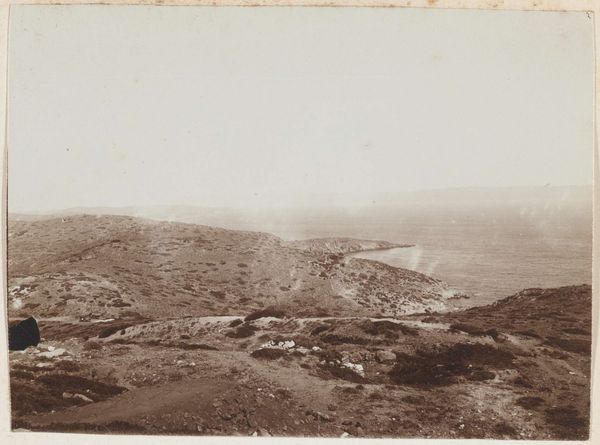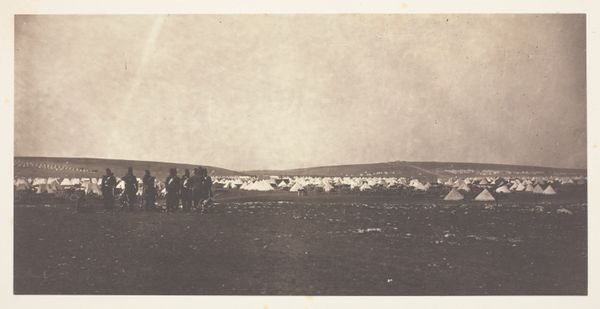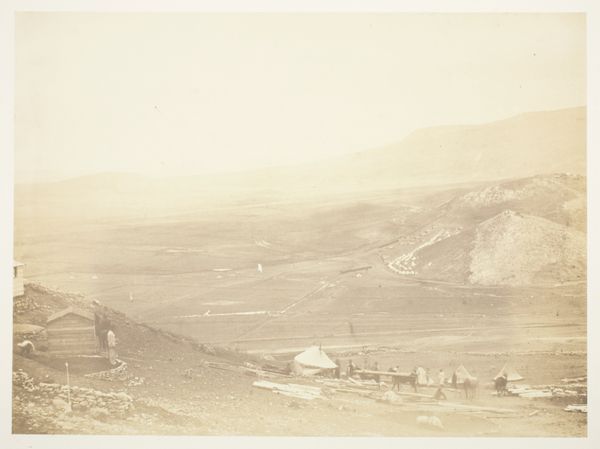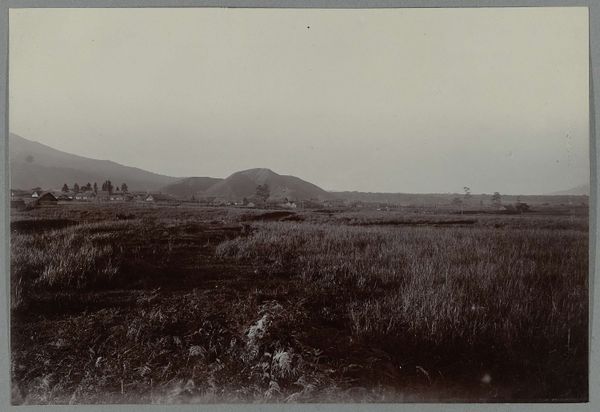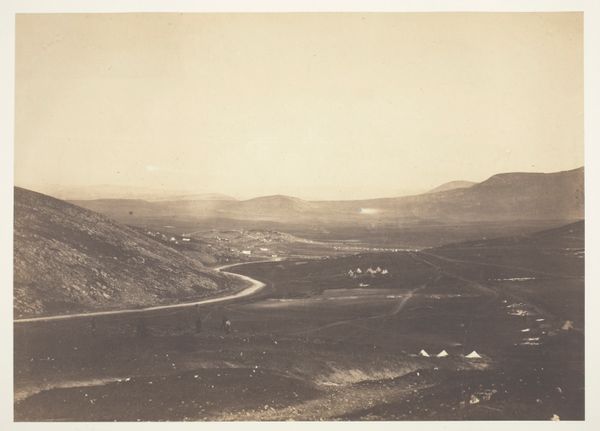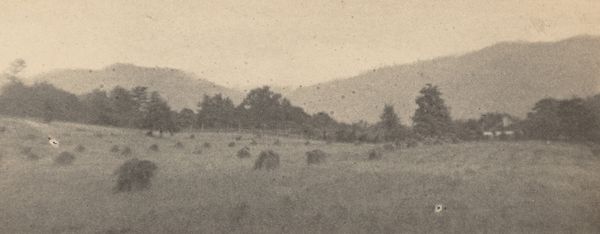
Dimensions: height 84 mm, width 110 mm
Copyright: Rijks Museum: Open Domain
Johannes Lodewijk Heldring captured this landscape near Marathon, Greece, in a photograph during his lifetime between 1852 and 1923. Heldring, son of a Dutch reformed minister, traveled extensively, documenting landscapes and cultures far from his home. This image, muted in tone, evokes a sense of timelessness. The scene is quiet, the landscape stretching out under a wide sky. What does it mean for a European artist to frame this landscape? How does Heldring’s cultural background influence what he chooses to capture and how he presents it? Consider the act of photographing itself – a technology introduced to a world steeped in its own histories and myths. In this context, the photograph isn't just a neutral recording, but a cultural artifact, reflecting both the observer and the observed. How does this image add to or challenge our understanding of Greek identity? The photograph stands as a testament to a moment, and perhaps more powerfully, to the gaze behind the lens.
Comments
No comments
Be the first to comment and join the conversation on the ultimate creative platform.

